Gardener Bloomsbury: Cultivating Green Spaces in the Heart of London
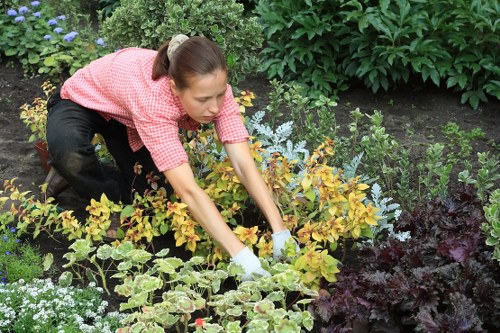
Bloomsbury, a vibrant area in central London, is renowned for its rich cultural heritage and beautiful green spaces. At the heart of maintaining these verdant areas is the dedicated team of gardeners who ensure that Bloomsbury remains a lush and inviting place for both residents and visitors.
The role of a gardener in Bloomsbury extends beyond mere maintenance. They are caretakers of history, preserving the botanical beauty that complements the architectural splendor of the area. From meticulously trimmed hedges to vibrant flower beds, gardeners play a crucial role in enhancing the aesthetic appeal of Bloomsbury.
Understanding the unique challenges faced by gardeners in Bloomsbury is essential. The urban environment demands innovative solutions to ensure that green spaces thrive amidst the bustling city life. This article delves into the multifaceted role of gardeners in Bloomsbury, highlighting their contributions and the significance of their work.
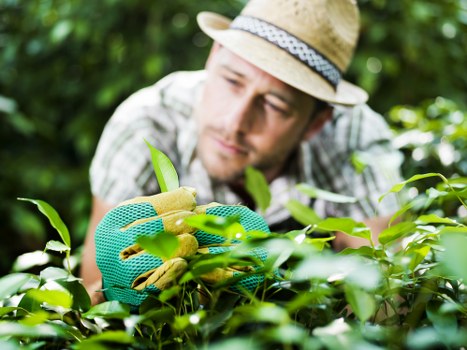
The Importance of Green Spaces in Bloomsbury
Green spaces in urban areas like Bloomsbury provide numerous benefits, both environmental and social. They act as the lungs of the city, improving air quality by absorbing pollutants and producing oxygen. Additionally, these spaces offer a peaceful retreat from the urban hustle, promoting mental well-being and providing a venue for recreational activities.
Gardeners are at the forefront of maintaining these green oases. Their expertise ensures that parks, gardens, and communal green areas remain inviting and sustainable. By selecting appropriate plant species and implementing eco-friendly gardening practices, they contribute to the ecological balance of Bloomsbury.
Moreover, well-maintained green spaces enhance property values and attract businesses, fostering economic growth in the area. The presence of flourishing gardens and parks makes Bloomsbury an attractive location for both living and investing, underscoring the vital role of gardeners in the community.
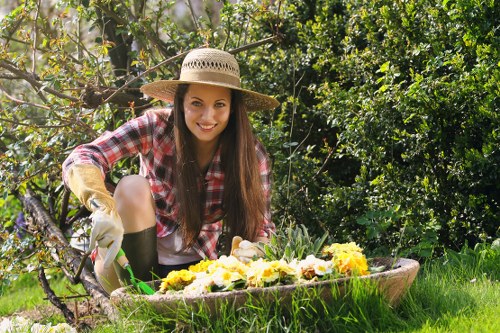
Key Responsibilities of Bloomsbury Gardeners
- Plant Maintenance: Regular watering, pruning, and fertilizing to ensure healthy plant growth.
- Lawn Care: Mowing, aerating, and treating lawns to maintain their appearance and health.
- Landscape Design: Planning and implementing garden layouts that are both functional and aesthetically pleasing.
- Weed and Pest Control: Managing unwanted plants and pests through eco-friendly methods.
- Seasonal Preparations: Adjusting gardening practices to suit seasonal changes, such as planting bulbs in spring or protecting plants in winter.
These responsibilities require a blend of technical knowledge and creative skills. Gardeners must stay updated on the latest horticultural practices and be adaptable to the changing needs of the ecosystem.
Furthermore, gardeners often engage with the local community, offering workshops and advice on home gardening, thereby fostering a culture of sustainability and environmental awareness.
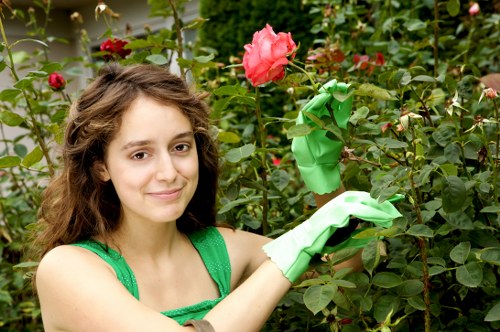
Sustainable Gardening Practices in Bloomsbury
Sustainability is a cornerstone of modern gardening, and Bloomsbury's gardeners are committed to environmentally friendly practices. These include using organic fertilizers, implementing composting systems, and adopting water-saving irrigation techniques.
By minimizing the use of chemical pesticides and fertilizers, gardeners protect the local wildlife and reduce the ecological footprint of their activities. Instead, they opt for natural pest control methods, such as introducing beneficial insects and using plant-based repellents.
Additionally, gardeners in Bloomsbury prioritize biodiversity by cultivating a variety of plant species. This diversity not only enhances the visual appeal of gardens but also supports local ecosystems, providing habitats for pollinators and other beneficial organisms.
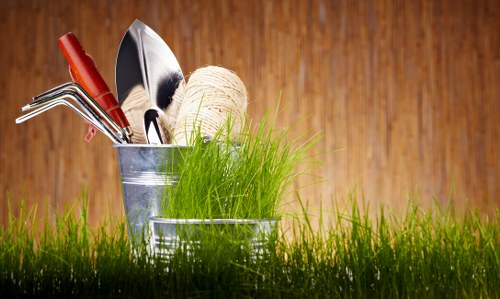
Community Engagement and Education
Beyond their gardening duties, Bloomsbury gardeners play a pivotal role in community engagement and education. They organize gardening workshops, school visits, and community projects that encourage local residents to participate in green initiatives.
These educational programs aim to instill a sense of responsibility towards the environment and empower individuals to contribute to the maintenance of green spaces. By sharing their knowledge and passion, gardeners inspire the next generation of environmental stewards.
Moreover, community gardens serve as hubs for social interaction, bringing together people from diverse backgrounds to collaborate on gardening projects. This fosters a sense of community and strengthens social bonds within Bloomsbury.
Tools and Techniques of Bloomsbury Gardeners
To achieve their tasks efficiently, gardeners in Bloomsbury rely on a range of tools and techniques. From traditional hand tools like spades and pruners to modern equipment such as electric trimmers and irrigation systems, the right tools are essential for effective garden maintenance.
Advanced techniques, including soil testing and precision planting, ensure that plants receive the optimal conditions for growth. Gardeners also utilize technology, such as weather forecasting apps and garden management software, to plan and execute their work more effectively.
Furthermore, ongoing training and professional development are vital for gardeners to stay abreast of the latest trends and innovations in horticulture. This continuous learning process enhances their skills and contributes to the overall quality of green spaces in Bloomsbury.
Challenges Faced by Bloomsbury Gardeners
Despite their expertise, gardeners in Bloomsbury encounter various challenges. Urban pollution can stress plants, making them more susceptible to diseases and pests. Limited space in densely populated areas requires creative solutions to maximize green coverage.
Climate change poses an additional hurdle, with unpredictable weather patterns affecting plant health and garden productivity. Gardeners must adapt their practices to cope with extreme temperatures, heavy rainfall, or prolonged droughts.
Balancing the conservation of historical gardens with the introduction of new plant species is another challenge. Gardeners must respect the heritage of Bloomsbury’s green spaces while ensuring they remain dynamic and resilient.
Innovations in Bloomsbury Gardening
Innovation is key to overcoming the challenges faced by gardeners in Bloomsbury. Vertical gardening, for example, is gaining popularity as a method to utilize limited space effectively. By growing plants on walls and structures, gardeners can increase green coverage without requiring additional land.
Another innovative practice is the use of hydroponics and aeroponics, which allow for soil-less cultivation. These techniques can enhance plant growth and reduce water usage, making them suitable for the urban environment of Bloomsbury.
Additionally, smart gardening systems that incorporate sensors and automation are being adopted to monitor plant health and optimize irrigation schedules. These technologies enable gardeners to manage large areas more efficiently and sustainably.
The Future of Gardening in Bloomsbury
The future of gardening in Bloomsbury looks promising, with an increasing emphasis on sustainability, community involvement, and technological integration. As awareness of environmental issues grows, gardeners are expected to adopt more eco-friendly practices and contribute to the city's green initiatives.
Collaborations with local schools, businesses, and community groups will likely expand, fostering a collective effort to maintain and enhance Bloomsbury's green spaces. Gardeners will continue to play a central role in these endeavors, leveraging their expertise to create thriving, sustainable environments.
Moreover, advancements in horticultural science and garden management technologies will provide gardeners with new tools and methods to improve their work. This synergy between tradition and innovation will ensure that Bloomsbury remains a model of urban gardening excellence.
Conclusion
Gardeners in Bloomsbury are the unsung heroes behind the area's picturesque green spaces. Their dedication, expertise, and innovative approaches contribute significantly to the beauty and sustainability of this central London neighborhood.
By maintaining and enhancing gardens, parks, and communal spaces, gardeners not only improve the environment but also enrich the lives of those who live and work in Bloomsbury. As urban green spaces become increasingly valuable, the role of gardeners will continue to be indispensable in shaping the future of Bloomsbury.
Local Relevance: Nearby Areas to Bloomsbury
Bloomsbury is surrounded by several notable areas, each adding its unique charm and character to the region. These nearby neighborhoods complement Bloomsbury's green spaces and provide additional amenities and attractions:
- Holborn: Just southwest of Bloomsbury, Holborn is known for its bustling streets and historical landmarks.
- King's Cross: Located north of Bloomsbury, King's Cross is a major transport hub with vibrant nightlife and cultural venues.
- Russell Square: Adjacent to Bloomsbury, Russell Square features beautiful gardens and is home to several museums.
- Covent Garden: East of Bloomsbury, Covent Garden offers shopping, entertainment, and a lively market scene.
- Euston: North of Bloomsbury, Euston is another key transportation area with access to major rail lines.
- Camden: Northwest of Bloomsbury, Camden is famous for its alternative culture, markets, and music scene.
- Soho: South of Bloomsbury, Soho is renowned for its vibrant nightlife, dining, and entertainment options.
- Fitzrovia: To the west of Bloomsbury, Fitzrovia is known for its bohemian atmosphere and creative industries.
- Marylebone: Southwest of Bloomsbury, Marylebone offers upscale shopping, dining, and cultural attractions.
- St Pancras: Adjacent to Bloomsbury, St Pancras is home to impressive railway stations and historic buildings.
- Regent's Park: East of Bloomsbury, Regent's Park provides expansive green spaces and recreational facilities.
- Holborn Viaduct: South of Bloomsbury, this area features modern office buildings and commercial establishments.
- Seven Dials: Near Bloomsbury, Seven Dials is a charming area with boutique shops and cafés.
- Russell Road: A quiet street close to Bloomsbury, offering residential tranquility.

Exploring the Green Connections
The proximity of these areas to Bloomsbury creates a network of green spaces and cultural hubs that enhance the overall living experience. Gardeners play a pivotal role in maintaining these interconnected parks and gardens, ensuring that each area remains a green sanctuary amidst the urban landscape.
Whether it's the expansive Regent's Park or the intimate gardens of Russell Square, the collaborative efforts of gardeners across these neighborhoods contribute to a cohesive and thriving green infrastructure in central London.
Frequently Asked Questions
1. What services do gardeners in Bloomsbury provide?
Gardeners in Bloomsbury offer a range of services including plant maintenance, lawn care, landscape design, weed and pest control, and seasonal garden preparations. They also engage in community education and sustainable gardening practices.
2. How can I hire a gardener in Bloomsbury?
Hiring a gardener in Bloomsbury can be done through local gardening services, referrals from neighbors, or online platforms that connect homeowners with professional gardeners. It's important to check credentials and reviews to ensure quality service.
3. What are some sustainable gardening practices used in Bloomsbury?
Sustainable practices include using organic fertilizers, implementing composting systems, adopting water-saving irrigation techniques, promoting biodiversity, and utilizing eco-friendly pest control methods.
4. Are there community gardening projects in Bloomsbury?
Yes, Bloomsbury hosts several community gardening projects where residents can participate in maintaining communal green spaces, learn about gardening, and collaborate on environmental initiatives.
5. What challenges do Bloomsbury gardeners face?
Challenges include urban pollution, limited space, climate change impacts, balancing historical preservation with new planting, and managing the health of plants amidst the city environment.